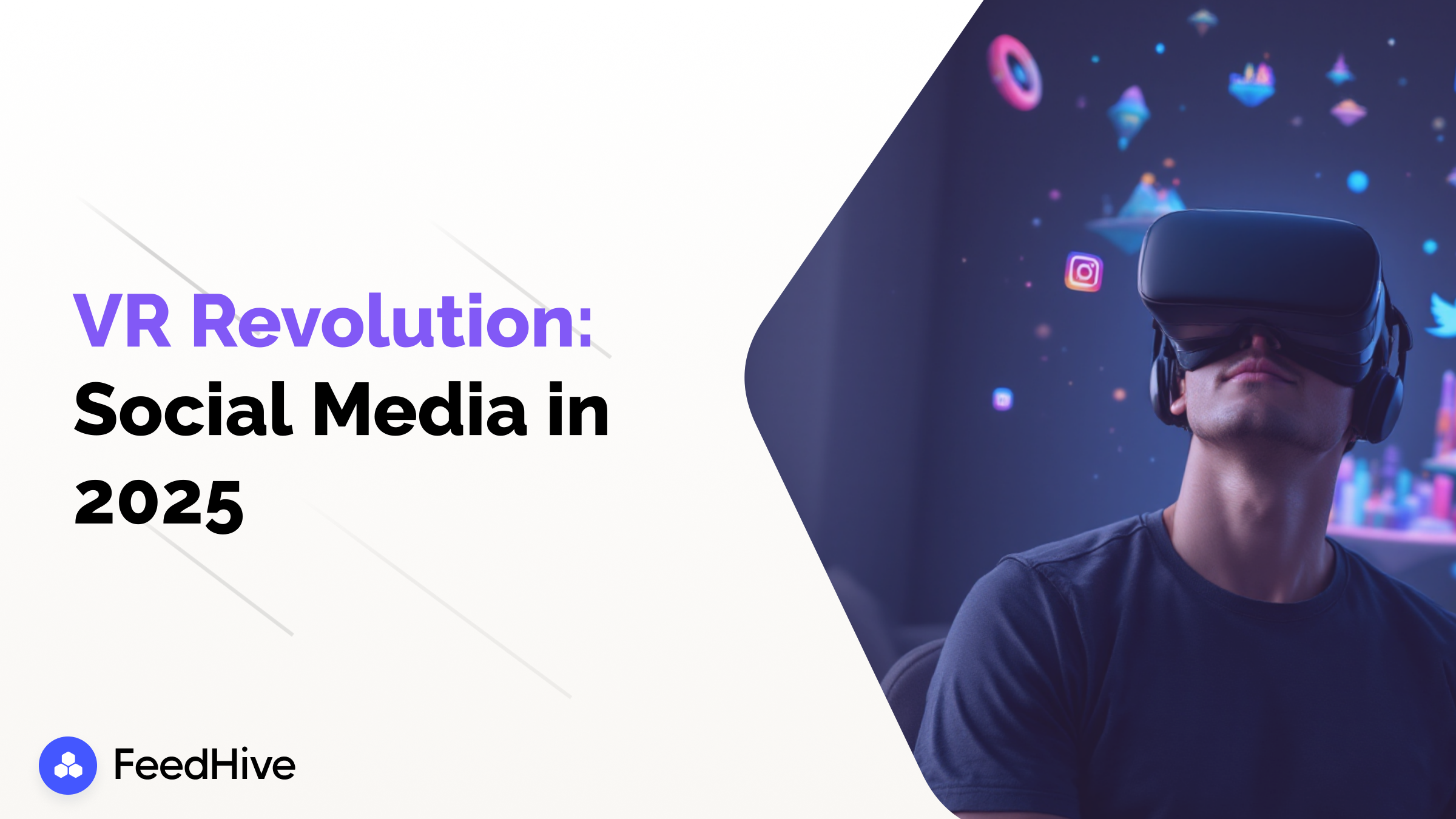
The rapid evolution of technology continues to reshape the marketing landscape, and virtual reality (VR) is no exception. As VR becomes increasingly accessible, brands now have the unique opportunity to create immersive, emotionally engaging experiences that captivate audiences in ways traditional media simply cannot. This post dives deep into how VR can revolutionize social media strategies in 2025 and beyond, offering practical insights, successful case studies, and tips for overcoming challenges.
Virtual reality is quickly becoming a game changer in the social media realm. Unlike traditional 2D digital content, VR provides immersive experiences that transport users to a completely simulated environment. By incorporating VR into social media strategies, brands can stimulate deeper emotional reactions and offer interactive experiences that foster stronger brand connections.
Research shows that VR experiences generate 27% stronger emotional responses than typical media, and users engage with VR content for nearly 5.2 minutes on average compared to just 1.8 minutes for standard formats (Pactx). This level of engagement can transform passive viewers into active participants, making VR a powerful tool for social media marketers looking to stand out.
The landscape of VR technology is evolving at a rapid pace. Back in 2023, the global VR market was valued at $15.8 billion, with projections suggesting that it will explode to $69.6 billion by 2026 (G2). Similarly, the VR social platforms market is set to grow from $1.5 billion in 2024 to $2.67 billion in 2025. With such impressive growth numbers, it’s clear that VR is transitioning from a niche luxury to a mainstream digital tool for marketers.
The accessibility of VR technology has also improved significantly. With a surge in affordable VR headsets and more user-friendly software, brands of all sizes can harness the power of VR without an enormous upfront investment. Moreover, as platforms like FeedHive innovate social media management, it becomes even easier for businesses to integrate VR experiences within their broader digital campaigns.
Integrating VR into social media strategies offers a range of compelling benefits:
These benefits underscore VR’s potential as not just an entertainment tool, but as a strategic asset in the digital marketing playbook.
Real-world applications of VR in marketing offer inspiring benchmarks for brands looking to innovate their social media strategies:
Gucci's AR Try-On Experience: By collaborating with Snapchat, Gucci allowed users to virtually try on luxury sneakers, reaching over 18 million unique users. This campaign highlighted the seamless integration of augmented experiences within social media.
McDonald’s Grimace Shake Campaign: Utilizing Snapchat’s AR lens, McDonald’s invited users to virtually embody the iconic Grimace character by trying on oversized sunglasses. The campaign quickly went viral, driven by organic user-generated content, which significantly expanded its reach.
Marriott’s “Teleporter” Experience: Marriott Hotels introduced a VR experience that let users virtually explore destinations such as Chile, Rwanda, and China. The "Teleporter" not only boosted brand awareness but also inspired future travel plans among viewers (dotit.org).
Volvo’s Virtual Reality Test Drive: Volvo’s innovative "Volvo Reality" app enabled users to take a virtual test drive of the XC90 model. This campaign resulted in over 40,000 downloads and saw high conversion potential, with more than 34,000 users expressing interest in purchase (esoftskills.com).
These case studies demonstrate how VR can be leveraged to achieve substantial reach, engagement, and conversion, setting a high benchmark for future campaigns.
To successfully harness the power of VR in your social media strategy, consider the following tips and tools:
By embracing these strategies, marketers can create compelling VR experiences that enhance brand storytelling and user engagement.
Despite its exciting potential, VR integration comes with its own set of challenges. Recognizing these challenges and planning solutions is critical to the success of your VR initiatives:
Addressing these challenges head-on will help ensure that your VR initiatives are sustainable and impactful.
Looking forward, several exciting trends are likely to shape the future of VR in social media:
Staying on top of these trends will give brands a competitive edge, allowing them to continually refine their social media strategies and drive higher engagement in 2025 and beyond.
Virtual reality offers a transformative approach to social media marketing. By integrating VR, brands can break away from conventional marketing methods and create experiences that resonate on a deeper emotional level. From enhanced customer engagement and personalized experiences to accelerated purchase decisions, the benefits of VR are clear. Although challenges exist, strategic planning, ongoing testing, and a focus on quality can help overcome these hurdles.
As VR continues to evolve, forward-thinking businesses will be best positioned to leverage its potential for innovative, immersive social media strategies. Whether you’re a large enterprise or a burgeoning startup, the integration of VR into your marketing mix could very well be the key to unlocking new levels of audience engagement and brand loyalty.